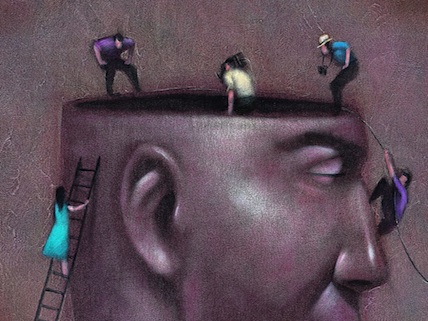It probably wasn’t at the top of anyone’s summer reading list. But the new Diagnostic and Statistical Manual of Mental Disorders, or DSM, now in its fifth edition, came out in May, and many folks in the fields of mental health and psychological disorders have been poring over it. Often called the “bible of psychiatry,” the new DSM-5 is intended to help health care professionals recognize symptoms that people suffer, in order to determine the most accurate diagnosis and most appropriate treatment.
The DSM had not been revised in fourteen years, and supporters and critics alike have been eager to see what has changed in terms of the diagnosis and categorization of psychological disorders (both mental illness and developmental disorders). Among the highlights receiving attention are the following:
- Bereavement, or grief over the loss of a loved one, is no longer ruled out as possibly contributing to major depression
- Asperger’s syndrome is no longer a distinct disorder but is included as part of autism spectrum disorder
- Binge eating—which is not the same as overeating—is now considered its own category of eating disorder
- Transgender identity is no longer considered a mental disorder
Like its predecessors, the DSM-5 provides lists of symptoms that define particular diagnoses. Many clinicians will rely on it as an authority, but not necessarily as the only factor in making a diagnosis. Researchers in such fields as genetics and neurobiology continue to advance our understanding of the complexities of the human brain and other physiological systems that affect the mind and behavior. Hopefully, research will lead to improved interventions and better outcomes for individuals suffering from mental disorders. One fundamental problem, however, is that even today very little is understood about the underlying causes of mental illnesses. What the DSM-5 is not is a guidebook based on the biology or genetics of mental illness—that will have to wait, at least, until the DSM-6.
Image credit: © Tim Teebken/Getty Images
Related Links
- DSM-5 Overview: The Future Manual
The official website of the Diagnostic and Statistical Manual of Mental Disorders (DSM-5), which was published by the American Psychiatric Association (APA) in May 2013.
(Source: American Psychiatric Association; accessed July 31, 2013) - Bad Diagnosis For New Psychiatry “Bible”
Read or listen to this “Talk of the Nation” interview with a panel including Tom Insel, the director of the National Institute of Mental Health; Gary Greenberg, author The Book of Woe: The DSM and the Unmaking of Psychiatry; and Jeffrey Lieberman, the president of the APA.
(Source: NPR, May 31, 2013) - “Psychiatric Bible” Tackles Grief, Binge Eating, Drinking
This report discusses the overhaul of the DSM, highlighting the most significant changes.
(Source: CNN.com, May 21, 2013) - Shortcomings of a Psychiatric Bible
This opinion piece finds that the new DSM-5 “lacks scientific validity.”
(Source: New York Times, May 11, 2013) - DSM-5
Besides describing its basic features, this encyclopedia article highlights the changes represented by the new DSM-5, as well as the history of its 14-year development and its critical reception; contains hyperlinks to dozens of other articles.
(Source: Wikipedia; accessed August 5, 2013)





wat was that like im speechless like wow all I could say is wow
wow just that’s my last time
wow